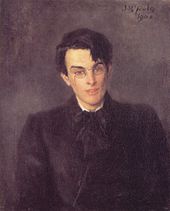
The post is about writing and self-reflexivity or meta-fiction.
It seems to me that writing is naturally self-reflexive. Especially creative writing. Why that is I don’t know but it goes back all the way to Homer’s epics and the dawn of Western literature.
For those of you who don’t know, meta-fiction is basically fiction about fiction. It draws attention to its own conventions and rules and inner workings. It ‘deconstructs’ itself. Self-reflexivity is in the same cluster of associated words. It basically means a text that refers to itself. These are very crude definitions. You’ll have to forgive me if they need more explaining or, indeed, if you know the terms better than I do.
It is fascinating to me how writing can’t help but to look at itself, especially creative writing. This kind of narcissism is hard to resist. It can be a positive, productive look in the mirror or it can be a negative, counter-productive look. It is easy to get bogged down in meta-fiction, to become so self-conscious you are paralysed. However, self-reflexivity can also be a guide. A light in the dark.
Let me give you an example. In the book I am currently writing there is a scene in the Otherworld where one of the major characters enters a small, island dwelling called a crannog. He goes there as he believes that there is an entrance to the real world somewhere in it. When I was writing it I had no idea how this entrance would appear. So, I wrote that he was in the dark, just like I was with the story. Then I had the idea that he should use the flame on his lighter to light up the dwelling. There are tapestries on the walls and he tries to grasp their meaning in the hope that they will show him what to do in order to get back to the real world. The tapestries proved to be a guide for both the character and myself, not just for that scene but for a lot of what happens afterward.
There are many smaller moments of self-reflexivity. Little flashes such as when characters say, okay, what do we do now? Or where do we go from here? The kind of positive, constructive self-reflexivity which is to be trusted. Much of the writing I am doing at the moment is done blind. I only find out where I’m going largely as I write it: the self-reflex has proved to be enormously helpful.
So where does it come from? I have no idea and I don’t want to know. It is truly mysterious. It may be the god of writers or it may be something that is inherent in our neurological make up. Whatever it is, I am in its debt. I can’t speak for anyone else.


